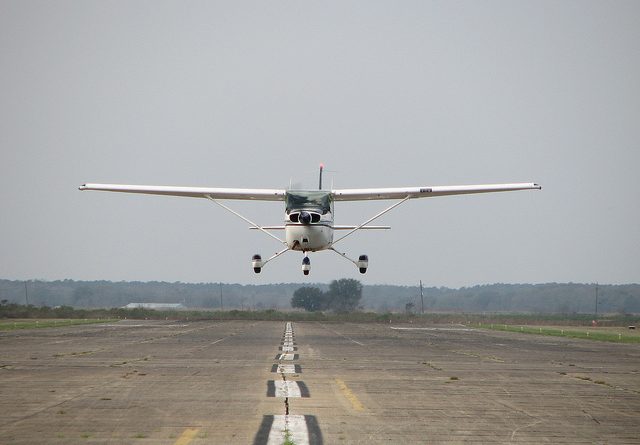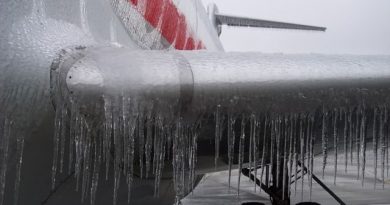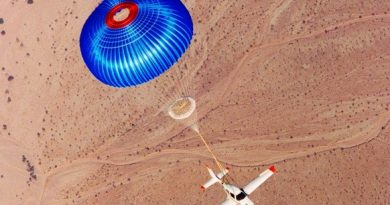What Really Is ADM / CRM / SRM?
Aeronautical Decision Making, Crew Resource Management, Single Pilot Resource Management
While these might be big fancy titles, the actual concepts they represent are actually much more simple, and probably something you already do to some extent subconsciously. The whole idea behind these concepts is to reduce GA accidents. The diagram above shows where GA accidents are most likely to occur, and given the high rate of occurrence on takeoff, as well as maneuvering and landing, it seems logical we could all benefit from enhancing our skills making decisions and utilizing resources in these critical phases of flight. First lets talk about CRM and SRM.
CRM
While CRM focuses on pilots operating in crew environments, many of the concepts apply to single-pilot operations. Many CRM principles have been successfully applied to single-pilot aircraft and led to the development of Single-Pilot Resource Management (SRM). The main idea behind CRM is to use all the available resources available to you in the flight deck / cockpit. The video at the beginning of this TOPIC describes CRM in-depth and more importantly, gives you examples of how to actually apply it.
SRM
SRM is defined as the art and science of managing all the resources (both on-board the aircraft and from outside sources) available to a single pilot (prior to and during flight) to ensure the successful outcome of the flight. SRM includes the concepts of ADM, risk management (RM), task management (TM), automation management (AM), controlled flight into terrain (CFIT) awareness, and situational awareness (SA). SRM training helps the pilot maintain situational awareness by managing the automation and associated aircraft control and navigation tasks. This enables the pilot to accurately assess and manage risk and make accurate and timely decisions. SRM is all about helping pilots learn how to gather information, analyze it, and make decisions. Although the flight is coordinated by a single person and not an onboard flight crew, the use of available resources such as auto-pilot and air traffic control (ATC) replicates the principles of CRM. To sum this up: think of creative ways to manage your resources as effectively as possible when you are the only pilot in the airplane (use ATC to your advantage, use suction cups to hold up a clipboard with charts on it, organize your flight bag so you can quickly find what you are looking for without taking your attention away from flying, etc.).
Aeronautical Decision Making
ADM really just refers to any decision you make regarding flying either before, during, or after your flight. Of course, the FAA does have specific guidance to help ensure you are making good decisions at all times. We’ll go ahead and take a look at some mnemonic devices and checklists the FAA would like you to use anytime you are going to be flying.
IMSAFE
One of the best ways single pilots can mitigate risk is to use the IMSAFE checklist to determine physical and mental readiness for flying:
- Illness—Am I sick? Illness is an obvious pilot risk.
- Medication—Am I taking any medicines that might affect my judgment or make me drowsy?
- Stress—Am I under psychological pressure from the job? Do I have money, health, or family problems? Stress causes concentration and performance problems. While the regulations list medical conditions that require grounding, stress is not among them. The pilot should consider the effects of stress on performance.
- Alcohol—Have I been drinking within 8 hours? Within 24 hours? As little as one ounce of liquor, one bottle of beer, or four ounces of wine can impair flying skills. Alcohol also renders a pilot more susceptible to disorientation and hypoxia.
- Fatigue—Am I tired and not adequately rested? Fatigue continues to be one of the most insidious hazards to flight safety, as it may not be apparent to a pilot until serious errors are made.
- Emotion—Am I emotionally upset?
After working through this checklist and answering these questions you should have a better idea if you are really fit for flight or if it might be best to stick to playing flight simulator today instead.
PAVE
Pave is another checklist you should use before flying to evaluate yourself, the airplane, the flight in general, and your mental state.
One of the most important concepts that safe pilots understand is the difference between what is “legal” in terms of the regulations, and what is “smart” or “safe” in terms of pilot experience and proficiency. The PAVE checklist can hopefully help you to begin to differentiate between “legal” and “safe”, often what is actually legal is not safe.
- P = Pilot in Command (PIC) The pilot is one of the risk factors in a flight. The pilot must ask, “Am I ready for this trip?” in terms of experience, recency, currency, physical, and emotional condition. The IMSAFE checklist provides the answers.
- A = Aircraft What limitations will the aircraft impose upon the trip? Ask the following questions:
- Is this the right aircraft for the flight?
- Am I familiar with and current in this aircraft?
- Aircraft performance figures and the AFM are based on a brand new aircraft flown by a professional test pilot. Keep that in mind while assessing personal and aircraft performance.
- Is this aircraft equipped for the flight? Instruments? Lights? Navigation and communication equipment adequate?
- Can this aircraft use the runways available for the trip with an adequate margin of safety under the conditions to be flown?
- Can this aircraft carry the planned load?
- Can this aircraft operate at the altitudes needed for the trip?
- Does this aircraft have sufficient fuel capacity, with reserves, for trip legs planned?
- Does the fuel quantity delivered match the fuel quantity ordered?
- V = EnVironment Weather is a major environmental consideration. Earlier it was suggested pilots set their own personal minimums, especially when it comes to weather. As pilots evaluate the weather for a particular flight, they should consider the following:
- What is the current ceiling and visibility? In mountainous terrain, consider having higher minimums for ceiling and visibility, particularly if the terrain is unfamiliar. • Consider the possibility that the weather may be different than forecast. Have alternative plans and be ready and willing to divert, should an unexpected change occur.
- Consider the winds at the airports being used and the strength of the crosswind component.
- If flying in mountainous terrain, consider whether there are strong winds aloft. Strong winds in mountainous terrain can cause severe turbulence and downdrafts and be very hazardous for aircraft even when there is no other significant weather.
- Are there any thunderstorms present or forecast?
- If there are clouds, is there any icing, current or forecast? What is the temperature/dew point spread and the current temperature at altitude? Can descent be made safely all along the route?
- If icing conditions are encountered, is the pilot experienced at operating the aircraft’s deicing or anti-icing equipment? Is this equipment in good condition and functional? For what icing conditions is the aircraft rated, if any?
- Evaluation of terrain is another important component of analyzing the flight environment.
- To avoid terrain and obstacles, especially at night or in low visibility, determine safe altitudes in advance by using the altitudes shown on VFR and IFR charts during preflight planning.
- Use maximum elevation figures (MEFs) and other easily obtainable data to minimize chances of an inflight collision with terrain or obstacles.
- What lights are available at the destination and alternate airports? VASI/PAPI or ILS glideslope guidance? Is the terminal airport equipped with them? Are they working? Will the pilot need to use the radio to activate the airport lights?
- Check the Notices to Airmen (NOTAM) for closed runways or airports. Look for runway or beacon lights out, nearby towers, etc.
- Choose the flight route wisely. An engine failure gives the nearby airports supreme importance.
- Are there shorter or obstructed fields at the destination and/or alternate airports?
- If the trip is over remote areas, is there appropriate clothing, water, and survival gear onboard in the event of a forced landing?
- If the trip includes flying over water or unpopulated areas with the chance of losing visual reference to the horizon, the pilot must be prepared to fly IFR (if you are not instrument rated or the aircraft is not instrument equiped then this is a problem!).
- Check the airspace and any temporary flight restriction (TFRs) along the route of flight. Nighttime Night flying requires special consideration.
- If the trip includes flying at night over water or unpopulated areas with the chance of losing visual reference to the horizon, the pilot must be prepared to fly IFR. • Will the flight conditions allow a safe emergency landing at night?
- Perform preflight check of all aircraft lights, interior and exterior, for a night flight. Carry at least two flashlights—one for exterior preflight and a smaller one that can be dimmed and kept nearby.
- E = External Pressures External pressures are influences external to the flight that create a sense of pressure to complete a flight—often at the expense of safety. Factors that can be external pressures include the following:
- Someone waiting at the airport for the flight’s arrival
- A passenger the pilot does not want to disappoint
- The desire to demonstrate pilot qualifications
- The desire to impress someone (Probably the two most dangerous words in aviation are “Watch this!”)
- The desire to satisfy a specific personal goal (“gethome-itis,” “get-there-itis,” and “let’s-go-itis”)
- The pilot’s general goal-completion orientation
- Emotional pressure associated with acknowledging that skill and experience levels may be lower than a pilot would like them to be. Pride can be a powerful external factor!
- Managing External Pressures Management of external pressure is the single most important key to risk management because it is the one risk factor category that can cause a pilot to ignore all the other risk factors. External pressures put time-related pressure on the pilot and figure into a majority of accidents. The use of personal standard operating procedures (SOPs) is one way to manage external pressures. The goal is to supply a release for the external pressures of a flight. These procedures include but are not limited to:
- Allow time on a trip for an extra fuel stop or to make an unexpected landing because of weather.
- Have alternate plans for a late arrival or make backup airline reservations for must-be-there trips.
- For really important trips, plan to leave early enough so that there would still be time to drive to the destination, if necessary.
- Advise those who are waiting at the destination that the arrival may be delayed. Know how to notify them when delays are encountered.
- Manage passengers’ expectations. Make sure passengers know that they might not arrive on a firm schedule, and if they must arrive by a certain time, they should make alternative plans.
- Eliminate pressure to return home, even on a casual day flight, by carrying a small overnight kit containing prescriptions, contact lens solutions, toiletries, or other necessities on every flight. The key to managing external pressure is to be ready for and accept delays. Remember that people get delayed when traveling on airlines, driving a car, or taking a bus. The pilot’s goal is to manage risk, not create hazards.
- Managing External Pressures Management of external pressure is the single most important key to risk management because it is the one risk factor category that can cause a pilot to ignore all the other risk factors. External pressures put time-related pressure on the pilot and figure into a majority of accidents. The use of personal standard operating procedures (SOPs) is one way to manage external pressures. The goal is to supply a release for the external pressures of a flight. These procedures include but are not limited to:
Other Checklists
At the end of the day you will have to use what works for you, but using what the FAA provides is a great starting point. Consider printing out the below checklists and taping them to the back of your kneeboard to keep handy when planning and when in flight.
[one-half-first]
I-Illness P-Pilot
M-Medication A-Aircraft
S-Stress V- Environment
A-Alcohol E-External Pressures
F-Fatigue
E-Eating
D-Detect Perceive
E-Estimate Process
C-Choose Perform
I-Identify
D-Do
E-Evaluate
[/one-half-first]
[one-half]
P-Pilot
A-Aircraft
V- Environment
E-External Pressures
Perceive
Process
Perform[/one-half]





